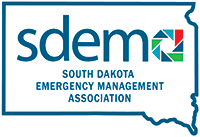SDEMA 2025 Pre-Conference Training |
Monday, September 8th
|
Tuesday, September 9th
-
SalamanderLive v3 Credentialing Training - 8 hour course
The training day will focus on SalamanderLIVE v3, a resource management tool. This statewide solution gives all city, county, and state agencies the ability to credential personnel and equipment and produce a standardized ID card credential. This then allows for seamless interoperability across all city and county lines. The resource information is housed in the web based SalamanderLIVE system. As of today, there is over 27,000 people, 22,000 pieces of equipment, and 2,000 organizations in our database across the state.
This course will highlight the latest changes with the release of SalamanderLIVE v3. You will also obtain the ability to gain greater situational awareness, generate incident specific reports, and equipment cost reports.
**SalamanderLIVE v2 will be shut down on June 30th** requiring users to login using Multi-Factor Authentication (MFA). Several updates have been made with the latest version. You will be sent instructions prior to class regarding the login process. SD state users will use the Single Single On (SSO) option.
Please bring your laptop to class. If you have a rapidTAG printer/laptop & TrackAPP you are welcome to bring them. You will be given the opportunity to exercise both tools. Please register for this course through the SDOEM website: Registration for Salamander Training
- Traffic Incident Management (TIMs) - 4 hour course
This intensive 4-hour Traffic Incident Management (TIMs) course provides participants with essential knowledge and skills to effectively respond to and manage traffic incidents.
The course covers fundamental TIM principles, including:
Incident scene safety: Prioritizing the protection of responders and motorists.
Rapid response and assessment: Efficiently evaluating incident severity and resource allocation.
Effective communication: Establishing clear and concise communication channels among responders.
Traffic management strategies: Implementing measures to minimize congestion and ensure traffic flow.
Incident clearance procedures: Coordinating efforts for swift and safe scene clearance.
Post-incident analysis and improvement: Identifying lessons learned and implementing corrective actions.
Through a combination of classroom instruction, hands-on exercises, and real-world case studies, participants will develop the competencies necessary to enhance road safety, reduce incident response times, and improve overall traffic flow. Registration for Traffic Incident Management (TIMs)
